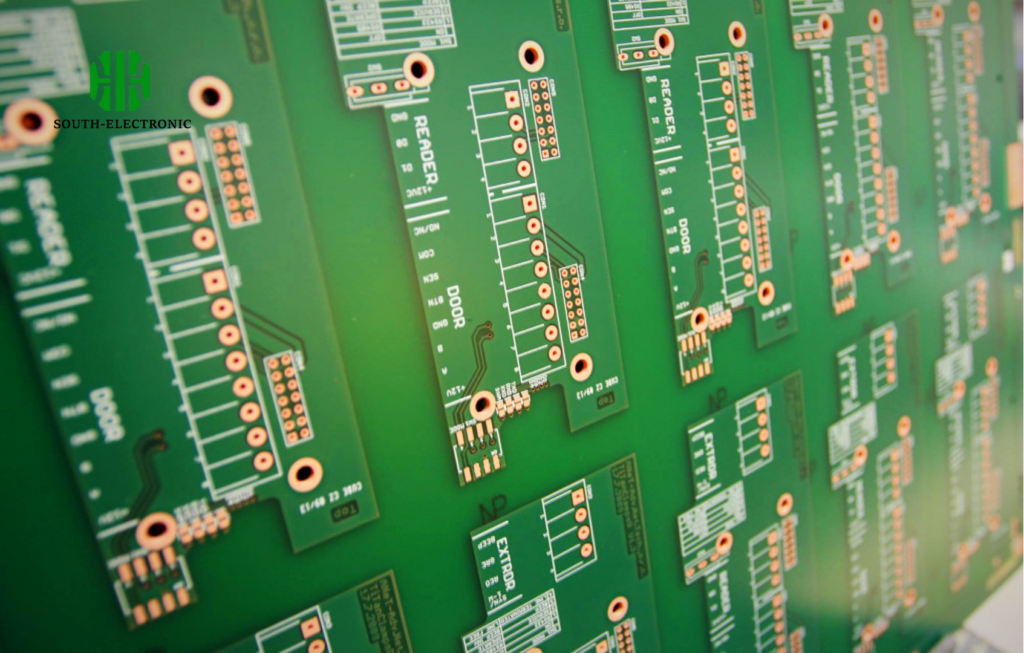Have you ever wondered what makes some circuit boards work in tough environments? Let me explain.
Polyimide PCBs are high-performance boards using polyimide as a substrate. This material’s strengths make it ideal for extreme conditions and reliable devices.
Now, let’s break down why polyimide is so special for PCBs. You’ll see how its properties help in different industries and tough situations.
What Are the Key Material Properties of Polyimide That Make It Ideal for PCBs?
Ever thought about what makes a PCB material stand out? Polyimide has traits that solve big problems for engineers.
Polyimide offers excellent thermal stability, electrical insulation, mechanical strength, and chemical resistance. These properties make it perfect for high-reliability PCBs in harsh conditions.

Let’s dive deeper into each property. First, thermal stability: polyimide can handle temperatures from -269°C to 400°C. That means it won’t warp or lose function in extreme heat or cold. Electrical insulation is key too—it stops current leaks, keeping circuits safe. Mechanical strength ensures the board doesn’t break under pressure, while chemical resistance protects it from corrosive substances like solvents or acids.
To visualize, here’s a table of its main properties:
| Property | Benefit for PCBs | Typical Performance Range |
|---|---|---|
| Thermal Stability | Withstands extreme temps without damage | -269°C to +400°C continuous use |
| Electrical Insulation | Prevents short circuits | Dielectric constant ~3.4 (1 MHz) |
| Mechanical Strength | Resists bending and impact | Tensile strength ~100 MPa |
| Chemical Resistance | Survives exposure to solvents/chemicals | Minimal swelling in most solvents |
These traits make polyimide a top choice when standard materials like FR-4 fall short. Whether in a space satellite or a factory machine, these properties ensure the PCB works reliably.
In Which Industries and Applications Are Polyimide PCBs Most Commonly Used?
Have you noticed how some industries need extra-reliable electronics? Polyimide PCBs step in where others can’t.
Polyimide PCBs are widely used in aerospace, automotive, industrial, and medical industries. They’re crucial for applications needing high performance in tough conditions.

Let’s look at each industry. In aerospace, satellites and aircraft need PCBs that handle extreme temps and radiation. Polyimide boards work in avionics systems, ensuring navigation and communication stay stable. The automotive sector uses them in engine control units and ADAS systems, where heat and vibration are constant challenges. Industrial machines, like those in factories or oil rigs, rely on them for durability in dusty, wet, or high-temperature environments. Medical devices, such as MRI equipment or implanted sensors, need biocompatible and reliable PCBs—polyimide fits the bill.
Here’s a breakdown of key applications:
| Industry | Key Applications | Why Polyimide Works Here |
|---|---|---|
| Aerospace | Avionics, satellite systems, radar units | Withstands thermal cycles and radiation |
| Automotive | Engine control, ADAS, EV battery management | Handles under-hood heat and vibrations |
| Industrial | Robotics, CNC machines, oil/gas sensors | Survives harsh chemicals and temps |
| Medical | MRI equipment, implantable devices, lab tools | Biocompatible and stable in sterilization |
Even consumer electronics benefit—think high-end laptops or flexible gadgets needing thin, durable boards. The versatility of polyimide means it solves problems across many fields, ensuring devices work when reliability is non-negotiable.
How Do Polyimide PCBs Perform in Extreme Environmental Conditions?
Ever wondered if a PCB can work in a desert or outer space? Polyimide PCBs are built for such extremes.
Polyimide PCBs excel in extreme temps, high humidity, chemical exposure, and mechanical stress. Their properties keep circuits functional where other materials fail.

Let’s explore each condition. Thermal extremes: as mentioned, they handle -269°C to 400°C. In a car engine, where temps spike, or a polar research device, they stay stable. High humidity is another challenge—polyimide resists moisture, preventing corrosion and short circuits. Chemical exposure, like in industrial cleaning or marine environments, doesn’t break down its layers. Mechanical stress, such as constant vibration in machinery or bending in flexible devices, won’t crack the board.
Here’s a performance comparison with standard FR-4 PCBs:
| Condition | Polyimide PCB Performance | FR-4 PCB Limitations |
|---|---|---|
| High Temperature | Stable up to 400°C continuously | Degrades above 130°C long-term |
| Low Temperature | Maintains flexibility at -269°C | Brittle below -50°C |
| Humidity | <1% water absorption (ASTM D570) | ~3% absorption, risking leaks |
| Chemicals | Resistant to most solvents/acids | Dissolves in strong chemicals |
| Vibration/Shock | High fatigue resistance (10^6 cycles) | Prone to cracking under stress |
These tests show why polyimide is chosen for missions critical to safety or functionality. Whether it’s a Mars rover enduring freezing nights or a coastal sensor battling saltwater, these PCBs don’t just survive—they perform consistently. This reliability reduces downtime and maintenance costs, making them a smart investment for tough environments.
Conclusion
Polyimide PCBs stand out for their thermal, electrical, and mechanical strengths. They’re vital in industries needing reliability in extreme conditions, proving their worth where other materials can’t keep up.



